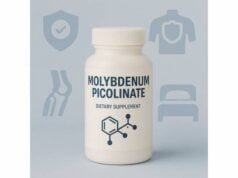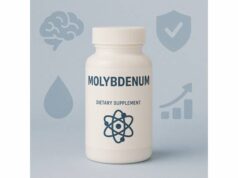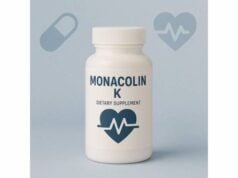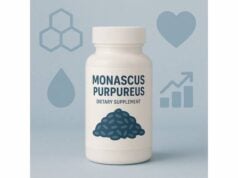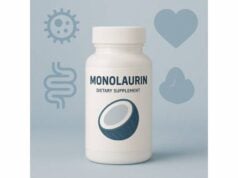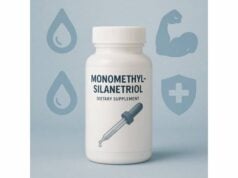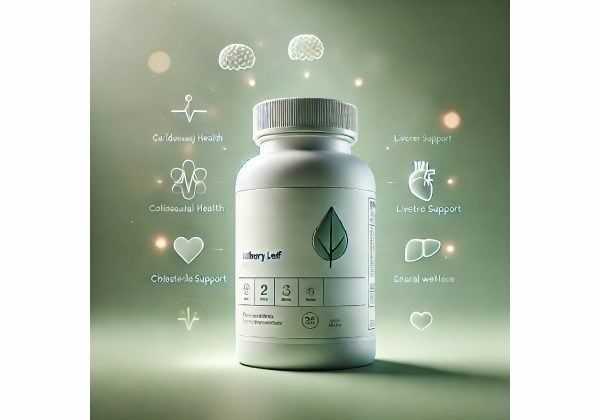
Mulberry leaf (most often from white mulberry, Morus alba) has a long food and tea history across East Asia. In nutrition science, it is best known for its content of 1-deoxynojirimycin (DNJ), a natural inhibitor of the enzymes that break complex carbohydrates into glucose. That single property explains why mulberry leaf shows up in glucose-support formulas: taken with a starchy meal, it can blunt the post-meal spike in blood sugar and insulin without acting like a stimulant. Extracts also concentrate flavonoids (rutin, quercetin glycosides), phenolic acids, and chlorogenic acids that add antioxidant and vascular support. People use it to smooth post-meal energy dips, support glycemic control alongside diet and movement, and complement weight-management efforts. This guide explains, in practical terms, what mulberry leaf is, how it works, how to take it correctly, where results vary, and who should avoid it. You’ll find realistic expectations, meal-level dosing, and troubleshooting tips so you can make informed, safe decisions.
Key Insights
- Best evidence: reduces post-meal glucose and insulin when taken with carbohydrate-rich meals.
- Typical use: 250–500 mg standardized extract (or tea from 1–2 g dried leaf) with the first bites of a starchy meal.
- Safety first: may potentiate glucose-lowering drugs; monitor for hypoglycemia if you use insulin or sulfonylureas.
- Avoid in pregnancy and breastfeeding; use caution with kidney disease and before surgery.
Table of Contents
- What is mulberry leaf?
- Does it really lower blood sugar?
- How to take mulberry leaf correctly
- What changes your results
- Common mistakes and troubleshooting
- Safety, side effects, who should avoid it
- Evidence in plain English
What is mulberry leaf?
Mulberry leaf is the young or mature foliage of Morus species—most commonly Morus alba (white mulberry). In traditional food culture it’s consumed as tea, in broths, or as a powdered leaf. Modern supplements concentrate its main active, 1-deoxynojirimycin (DNJ), and preserve a spectrum of polyphenols (rutin, isoquercitrin, chlorogenic acids) and minerals (notably potassium, magnesium, and small amounts of manganese). While the fruit of mulberry is rich in anthocyanins, the leaf is defined by DNJ, an iminosugar first characterized for its alpha-glucosidase inhibition—the same enzyme class targeted by the prescription drug acarbose. That enzymatic “speed governor” slows carbohydrate breakdown in the small intestine, flattening the post-meal rise in glucose and insulin.
How it works—plainly stated. When you eat starch (rice, pasta, bread, potatoes), enzymes chop those long chains into glucose. DNJ and certain leaf polyphenols partly block these enzymes at the brush border of the small intestine. Less glucose arrives all at once, so the peak is lower and later. Because the effect occurs in the gut and only around the meal, mulberry leaf does not act like a stimulant; it won’t lift fasting glucose by itself, and it shouldn’t cause jitteriness.
Leaf vs. fruit (and why it matters).
- Leaf → DNJ-standardized, strong meal-level effects on post-prandial glucose.
- Fruit → anthocyanin-standardized; also blunts post-prandial spikes but via a slightly different polyphenol profile.
Labels sometimes say simply “mulberry extract.” If your goal is mealtime glucose support, confirm the plant part (leaf) and, ideally, the DNJ content.
Forms you’ll see.
- Standardized extract capsules (e.g., 1–3% DNJ, sometimes expressed as milligrams DNJ per serving).
- Loose leaf or tea bags (dried, for infusion).
- Functional foods (noodles, biscuits, or rice powder fortified with mulberry leaf extract).
What it is not. Mulberry leaf is not a replacement for medical treatment of diabetes. It complements diet, movement, and—if prescribed—medications. Think of it as a meal-time tool to reduce the biggest daily glucose swings, not a cure.
Who tends to try it.
- People with prediabetes or early type 2 diabetes working on diet and activity.
- People who feel post-meal crashes after high-starch meals.
- Anyone using a continuous glucose monitor (CGM) who wants gentler curves from rice, pasta, or bread.
Quality cues. Look for the botanical name (Morus alba leaf), a DNJ amount per serving (e.g., “5 mg DNJ”), third-party testing, and instructions tied to meals. Vague “proprietary blends” without actives or directions are less helpful.
Does it really lower blood sugar?
Yes—when you take it with a carbohydrate-rich meal. The most consistent outcome in controlled trials is a smaller and delayed post-meal glucose rise alongside a reduced insulin response. Measured over the two hours after eating, the glucose area-under-the-curve (AUC) typically falls by a meaningful margin versus the same meal without mulberry leaf. Think of it as smoothing the spike, not eliminating it.
What this looks like in real life.
- With a bowl of rice or a pasta dinner, a standardized leaf extract taken at the first bites produces a gentler rise on a CGM graph. Many people describe fewer energy crashes and less post-meal sleepiness.
- With mixed meals that already contain protein, fat, and fiber (e.g., salmon, salad, and a modest portion of potatoes), the incremental effect is still present but smaller.
What it does not do.
- It will not, by itself, make fasting glucose normal if your baseline diet and activity don’t change.
- It won’t replace prescription therapy when that therapy is indicated.
- It won’t reliably lower HbA1c unless you use it regularly with most carb-heavy meals and also improve overall diet quality, weight, and movement.
Other possible benefits (early but interesting).
- Lipids and weight: Some trials and observational studies suggest small improvements in triglycerides and waist measures when mulberry leaf is paired with calorie control; these effects are secondary to better meal composition and fewer insulin surges.
- Uric acid and blood pressure: Leaf polyphenols may modestly influence endothelial function and nitrite/nitrate balance, but findings are inconsistent and small.
How it compares to other options.
- Vinegar or lemon juice before meals can reduce glycemic response via slower gastric emptying; mulberry leaf works inside the gut at the enzyme level.
- Fiber (e.g., psyllium) lowers peaks by slowing absorption; it pairs well with mulberry leaf.
- Berberine acts mainly on hepatic and muscular pathways; it is a systemic agent and can interact with medications. Mulberry leaf is more localized to the meal.
Who sees the biggest effect? People with higher baseline post-prandial spikes, those eating higher-GI starches (white rice, soft breads, overcooked pasta), and those who accurately time the extract with the meal. If your diet is already lower-GI with ample vegetables and protein, the additional benefit is smaller—but still useful for the occasional carb-heavy dish.
Bottom line: mulberry leaf is one of the more predictable, meal-specific tools for smoothing glucose excursions—most valuable when used purposefully with high-starch meals and paired with fundamentals (portion control, protein, fiber, and a short post-meal walk).
How to take mulberry leaf correctly
Identify the right meals. The extract works best with starch-focused meals—rice bowls, noodles, pasta, bread-heavy plates, potatoes, and sweet desserts. You probably don’t need it with a salad-and-protein lunch or a low-carb breakfast.
Match the form to your routine.
- Standardized extract (capsule): convenient and precise. Look for labels listing DNJ per serving.
- Tea/infusion: a gentler option that pairs with meals; less precise dosing but pleasant and hydrating.
- Powders/sachets: easy to add to rice or smoothies; verify leaf part and standardization.
Suggested meal-time dosing (adults).
- Extract: 250–500 mg standardized mulberry leaf extract taken with the first bites of a 40–70 g carbohydrate meal. For unusually large carb loads, some people use up to 1,000 mg, but start low to assess tolerance.
- DNJ content (if listed): aim for 3–12 mg DNJ with a typical high-carb meal; the upper end suits larger individuals or very starchy plates.
- Tea: 1–2 g dried leaf in 250–300 mL hot water; steep 10–15 minutes and drink with the meal. Tea delivers lower DNJ per serving than many extracts but still provides a measurable effect and polyphenol antioxidants.
Timing matters. Take it at the start of the meal. The enzymes it targets are busy when starch first arrives. Taking it 30 minutes before or after blunts the benefit.
How to combine for best results.
- Front-load vegetables or protein (a small salad or a few bites of protein before starch).
- Take mulberry leaf with the first bites of starch.
- Go for a 10–15 minute walk afterwards to further smooth the glucose curve.
If you use a CGM or meter. Test the same meal with and without mulberry leaf a week apart. Compare peak glucose at 60–120 minutes and the time back to baseline. Use that data to dial in dose (e.g., move from 250 mg → 500 mg extract for the spikiest meals).
How long to use it. Mulberry leaf is an occasion-based supplement. Use it when you eat starchy meals. Some people also take a lower dose daily if their pattern includes frequent carbohydrates; reassess monthly with your clinician if you have diabetes.
What not to do.
- Don’t use mulberry leaf to justify much bigger portions of refined starch.
- Don’t stack it with other carb-blocking supplements or acarbose without oversight; GI side effects can add up.
- Don’t assume all “mulberry” products are leaf—verify plant part to avoid disappointment.
Storage and quality. Keep capsules in a cool, dry place; use tea within 6–9 months for best flavor and potency. Choose brands with third-party testing and a clear contact channel for certificates of analysis.
What changes your results
Meal composition and order. Protein, fat, and fiber slow gastric emptying and carbohydrate absorption. Eating vegetables or protein first, then starch, can reduce peaks by 10–30% on its own. Mulberry leaf adds to that effect. The reverse order (bread basket first, protein last) undermines your results.
Type and state of starch.
- Higher-GI starches (sticky rice, soft white bread, instant noodles) spike faster—mulberry leaf makes a visible dent.
- Lower-GI starches (al dente pasta, intact whole grains, cooled-and-reheated potatoes) spike less, so the add-on benefit is smaller.
- Cooking method: Overcooking increases available starch; al dente or cooled-then-reheated starch (more resistant starch) lowers impact.
Dose-response. Effects increase from 250 → 500 → 1,000 mg extract, but GI tolerance can slip (more gas/bloating) at the top end. Most people find a sweet spot at 250–500 mg. If your meal is light on carbs (≤25 g), you may not need it.
Individual variability.
- Body size and insulin sensitivity: Larger individuals and those with higher baseline spikes often need the upper range for the same meal.
- Gut comfort: Sensitive GI tracts may prefer tea or lower extract doses with a fiber-rich meal.
- Medication context: Taking insulin or sulfonylureas increases the chance of hypoglycemia when mulberry leaf is added; start with the lowest dose and monitor closely.
Product differences.
- Standardization: Look for DNJ content or total iminosugars; two “500 mg” products can perform very differently.
- Leaf age and harvest: Younger leaves can have higher DNJ, but good brands standardize so batch-to-batch stays consistent.
- Part mislabeling: Some generic “mulberry extract” powders are fruit-dominant; confirm “leaf” on the label.
Lifestyle “multipliers.”
- Movement: Even a 10-minute walk after meals can rival supplement effects; together, they stack.
- Sleep and stress: Poor sleep and high stress make glucose curves steeper; mulberry leaf helps less in that state.
- Hydration and alcohol: Adequate water supports digestion; alcohol with refined carbs can produce variable glucose responses and increase appetite—use caution.
When results stall. Re-audit the meal (portion creep, dessert add-ons, sweetened drinks), timing (did you take it with the first bites?), and dose. If all are optimized and spikes persist, discuss broader strategies with your clinician: protein targets, fiber intake, GLP-1–friendly meals, medication adjustments, and activity planning.
Common mistakes and troubleshooting
Mistake 1: Buying the wrong plant part
- Problem: Purchasing “mulberry extract” that is actually fruit, not leaf, then seeing weaker meal-time effects.
- Fix: Check the label for Morus alba leaf and, ideally, DNJ per serving.
Mistake 2: Taking it at the wrong time
- Problem: Swallowing the capsule after the meal, or long before.
- Fix: Take it with the first bites of starch or mix a measured powder into the dish.
Mistake 3: Expecting fasting glucose to fall
- Problem: Using mulberry leaf as a daily pill and expecting fasting numbers or HbA1c to change without diet/activity shifts.
- Fix: Treat it as a meal tool. Improve overall diet quality, protein, fiber, sleep, and movement for A1c.
Mistake 4: Stacking with carb-blockers
- Problem: Combining mulberry leaf with acarbose or multiple enzyme-inhibiting supplements causes gas and bloating.
- Fix: Use one agent; coordinate with your clinician if on medications.
Mistake 5: Ignoring portion size
- Problem: Relying on the supplement to neutralize very large carb loads.
- Fix: Scale dose with meal size, add vegetables/protein, and consider resistant starch strategies (cool and reheat potatoes/rice).
Mistake 6: No outcome tracking
- Problem: Unclear whether it helps.
- Fix: With a CGM or glucometer, test the same meal with and without mulberry leaf; record peak and 2-hour values. Without devices, track energy and cravings for two hours post-meal.
Mistake 7: Overlooking medication risk
- Problem: Adding mulberry leaf on top of insulin or sulfonylureas without monitoring, leading to lows.
- Fix: Start low, monitor closely, and inform your clinician.
Quick troubleshooting
- Still spiking? Verify carbs, take 500 mg extract next time, eat vegetables first, and walk 10 minutes after.
- GI upset? Step down to 250 mg, switch to tea, add meal fiber, avoid stacking with other blockers.
- No difference at all? Confirm it’s leaf, check DNJ, ensure timing, and test on a truly starchy meal.
Safety, side effects, who should avoid it
Overall profile. Mulberry leaf is widely consumed as food/tea and is generally well tolerated in supplement form when taken with meals. The most common issues are gastrointestinal (gas, bloating), especially at higher doses or when combined with other carb-blocking agents.
Potential side effects (usually mild and meal-related).
- Gas, abdominal discomfort, or loose stools—more likely with large carb loads or when stacking with similar supplements.
- Hypoglycemia symptoms (shakiness, sweating, lightheadedness) if combined with insulin or sulfonylureas and portions are small—monitor glucose closely when starting.
Use caution or avoid if:
- You are pregnant or breastfeeding (insufficient safety data in these populations).
- You have advanced kidney disease (limited human data; high-polyphenol extracts are used cautiously).
- You are scheduled for surgery (stop 1–2 weeks prior; discuss perioperative glucose plans with your team).
- You take alpha-glucosidase inhibitors (acarbose, miglitol, voglibose)—mechanistic overlap raises GI side-effect risk without clear added benefit.
- You have a history of food allergies to Moraceae family plants (rare with leaf tea/extracts, but avoid if known).
Drug and supplement interactions (prudence list).
- Insulin and sulfonylureas: risk of additive glucose-lowering; monitor and coordinate with your clinician.
- Other carb-blockers/fiber concentrates: additive GI effects; introduce one change at a time.
- Berberine or GLP-1–based therapies: different mechanisms; many people still benefit from meal-level smoothing, but involve your prescriber to simplify regimens and reduce redundancy.
Quality and contamination. Choose brands with third-party testing for identity, potency (DNJ), heavy metals, and microbial limits. Avoid products with vague blends or sensational claims.
When to seek care. Persistent hypoglycemia, severe abdominal pain, black/tarry stools, allergic symptoms (hives, swelling, difficulty breathing), chest pain, or confusion warrant prompt medical attention. For anyone with diabetes, loop your clinician in before making changes to medications or adding any glucose-modulating supplement.
Bottom line. For most adults, mulberry leaf used with starchy meals is low-risk and practical. The key is context: start low, match dose to meal size, avoid redundant combinations, and monitor if you use glucose-lowering drugs.
Evidence in plain English
What is well supported.
- Post-prandial glycemia: Multiple randomized, crossover, and parallel-arm trials show that mulberry leaf extract taken with carbohydrate-rich meals reduces 2-hour glucose and insulin exposure. Effects are dose-responsive within practical ranges and are most obvious with higher-GI starches.
- Mechanism: The primary driver is alpha-glucosidase inhibition by DNJ and supportive polyphenols at the intestinal brush border. The result is a slower rate of carbohydrate breakdown and absorption.
What is promising but not definitive.
- Long-term markers: Some small studies report favorable trends in HbA1c, triglycerides, or waist circumference when mulberry leaf is consistently paired with diet changes. Larger, longer studies would clarify magnitude and durability.
- Vascular markers: Early signals suggest improved endothelial function or oxidative stress markers; clinical relevance remains to be established.
What to be skeptical about.
- Claims that mulberry leaf reverses diabetes, melts fat without diet changes, or replaces prescription therapy.
- Products that hide exact DNJ content or use the generic term “mulberry extract” without stating leaf.
How to apply the evidence without overreach.
- If your main problem is big meal-time spikes, mulberry leaf is a credible first-line supplement. Use 250–500 mg extract (or tea) with starchy meals, improve meal order, and add a short walk.
- If your goal is A1c reduction, treat mulberry leaf as one piece of a plan that includes protein targets, fiber, resistance training, sleep, and—if needed—medications.
- If you’re on glucose-lowering drugs, involve your clinician; a thoughtful plan prevents lows and simplifies your regimen.
Research gaps. We still need head-to-head comparisons of leaf vs. fruit extracts at matched meal contexts, standardized DNJ reporting across products, and longer trials exploring durability, adherence, and quality-of-life outcomes.
Bottom line. Mulberry leaf is a meal-targeted, mechanistically sound option for smoothing carbohydrate responses. Use it where it does the most good—next to the starch on your plate—and measure results to keep your plan honest.
References
- Dose-response efficacy of mulberry fruit extract for reducing post-prandial blood glucose and insulin responses: randomized trial evidence in healthy adults 2023 (RCT)
- Mulberry leaf and 1-deoxynojirimycin: mechanisms and clinical evidence for postprandial glycemic control 2018 (Review)
- Standardized Morus alba leaf extract reduces glycemic response to carbohydrate-rich meals: a randomized, double-blind, placebo-controlled crossover study 2021 (RCT)
- Therapeutic potential of Morus alba leaves in metabolic disorders: a systematic review 2021 (Systematic Review)
- Safety evaluation of mulberry leaf extract: subchronic toxicity and human tolerability 2019 (Safety Study)
Disclaimer
This guide is for educational purposes only and is not a substitute for professional medical advice, diagnosis, or treatment. Mulberry leaf does not replace prescribed therapies for diabetes or other conditions. Always consult your healthcare provider before starting any supplement, especially if you have a medical condition, take medications (including insulin or sulfonylureas), are pregnant or breastfeeding, have kidney disease, or are planning surgery. If you experience symptoms of low blood sugar or other concerning effects, stop use and seek medical care.
If this article helped you, please consider sharing it on Facebook, X (formerly Twitter), or your preferred platform, and follow us for future science-based wellness guides. Your support helps us continue creating clear, people-first content.

